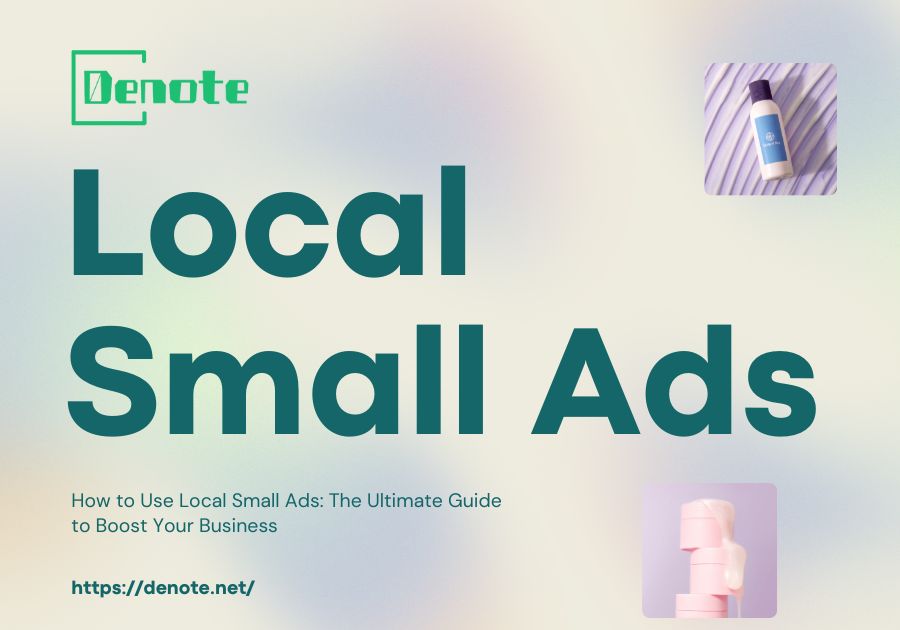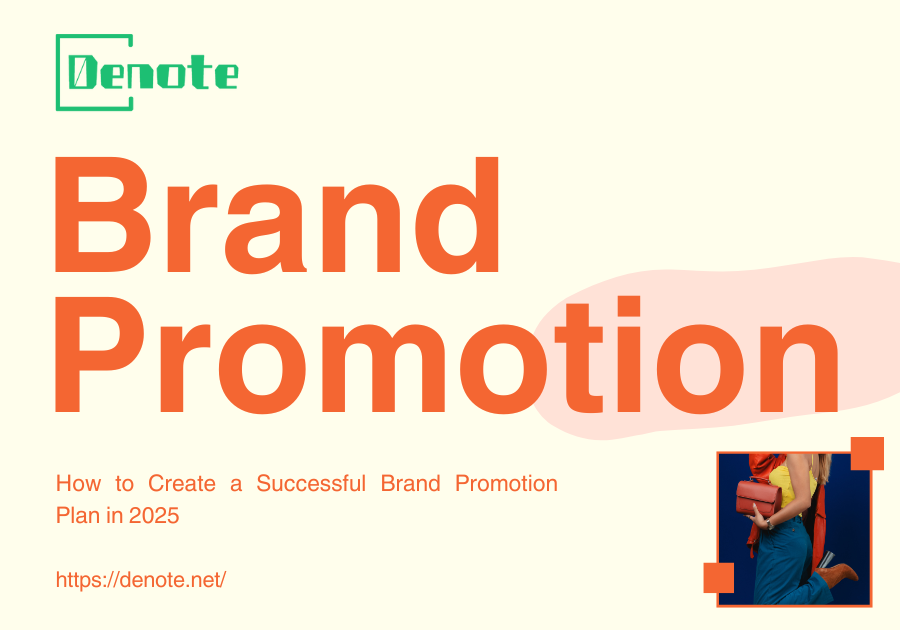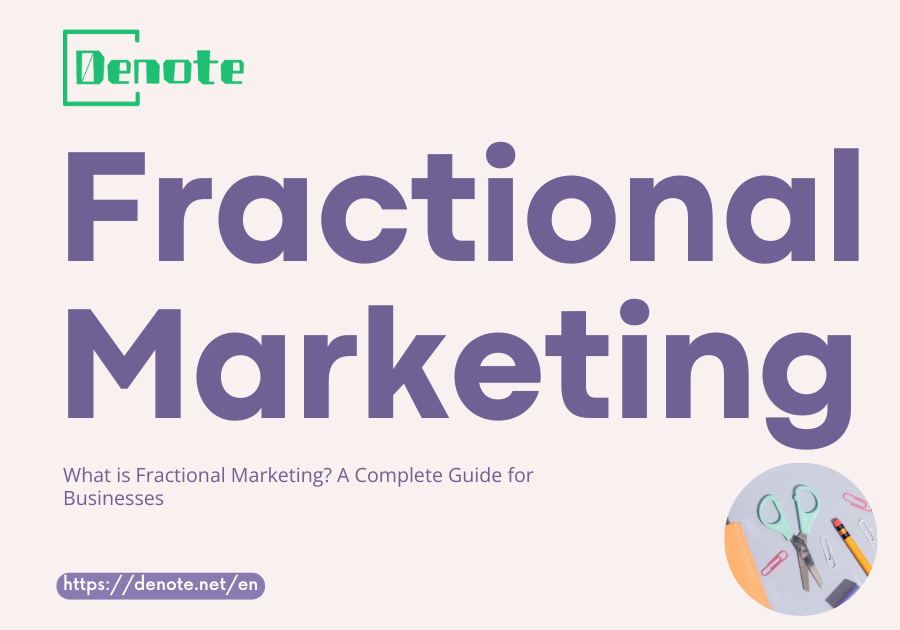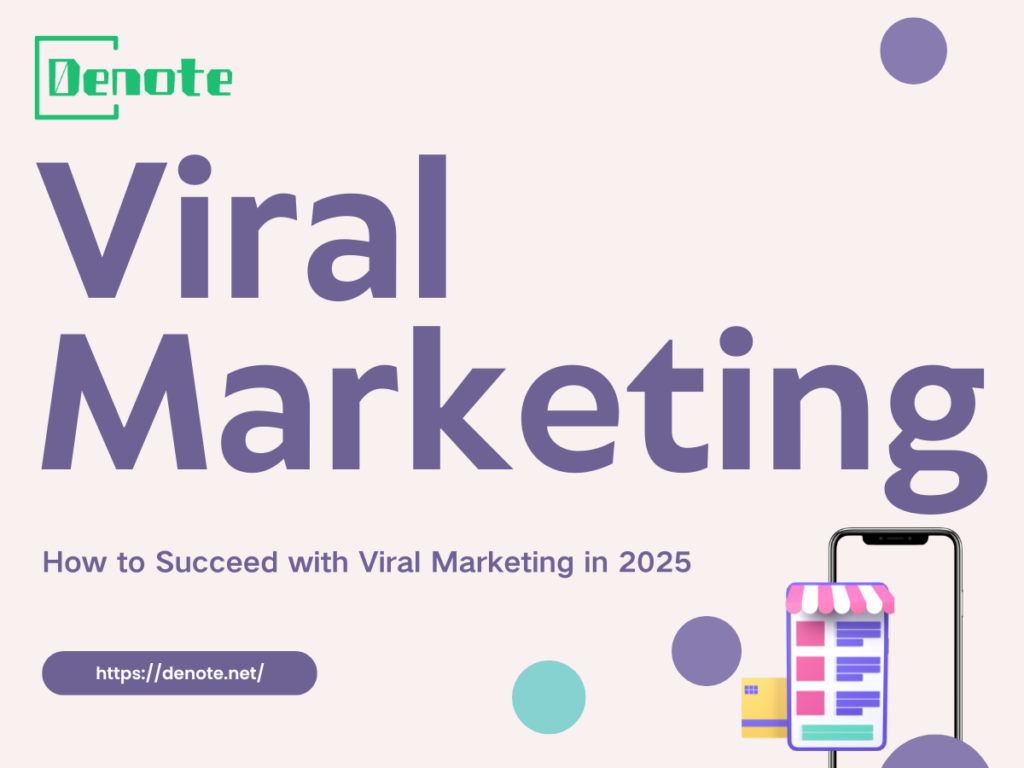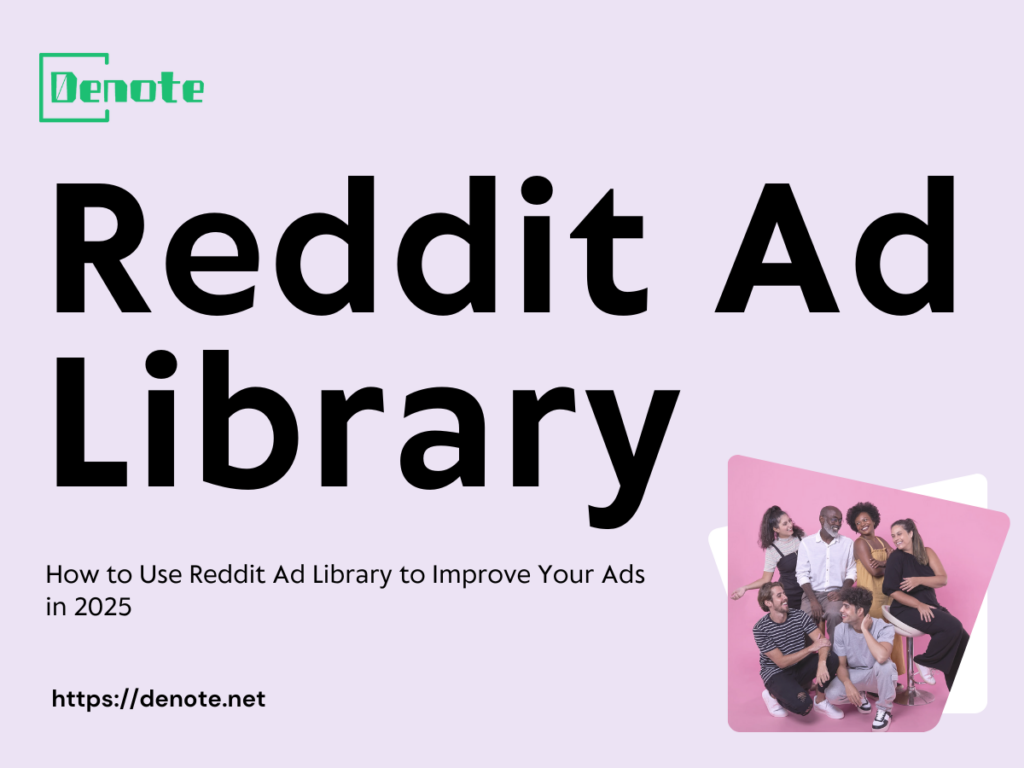How to Increase ROAS on Facebook Ads: 10 Proven Strategies in 2025
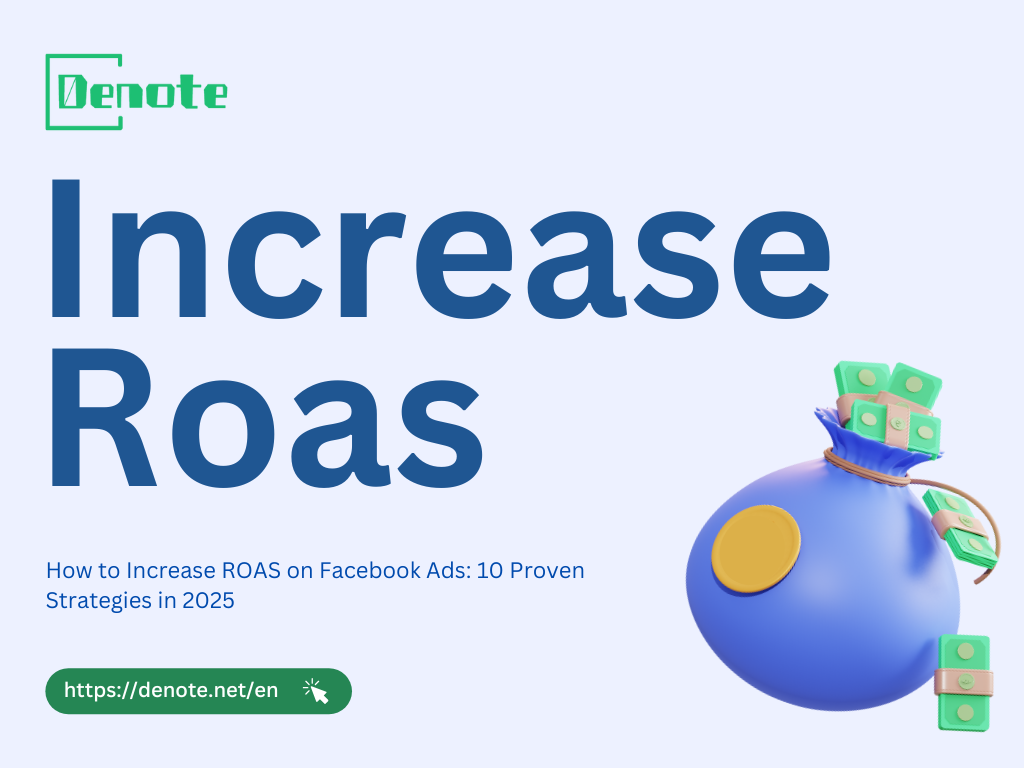
- What Is ROAS and How Is It Calculated
- Facebook ROAS vs General ROAS: What’s Different
- What’s a Good Facebook ROAS Benchmark in 2025
- Strategy 1–3: Optimize Facebook Ad Creatives
- Strategy 4–6: Target the Right Audience
- Strategy 7–8: Improve Landing Page Conversion Rates
- Strategy 9–10: Optimize Facebook Ad Budget and Bidding
- Bonus: Tools to Help You Increase Facebook ROAS
- Conclusion
What Is ROAS and How Is It Calculated
Return on Ad Spend (ROAS) is a key number to know when advertising online, especially on platforms like Facebook. It tells you how much revenue you make for every dollar you spend on ads. The formula to calculate ROAS is easy:
- ROAS = Revenue from Ads / Cost of Ads
For example, if you put $1,000 into Facebook Ads and earn $5,000 from them, your ROAS is 5. This means for each dollar you spend, you get $5 back.
It's very important to learn how to understand and improve your ROAS if you want to make your ad spending work better for you. A high ROAS suggests that your ad campaign is doing well. It helps you decide how to best use your budget and improve your advertising plan. By focusing on ROAS, businesses can ensure that their marketing efforts are both cost-effective and profitable.
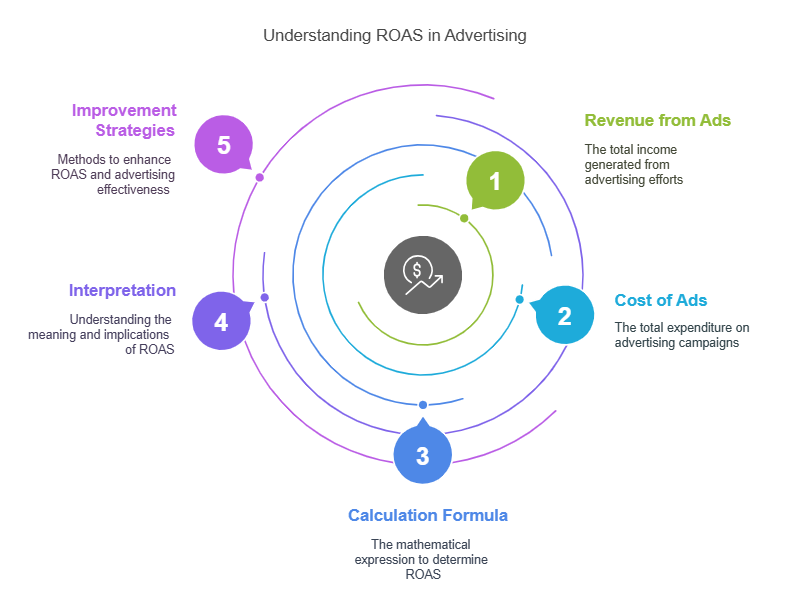
Facebook ROAS vs. General ROAS: What's Different
Return on Ad Spend (ROAS) is a common way to measure how well your advertising is doing. However, when using ROAS on Facebook, there are some special things you need to consider:
- Audience Targeting: Facebook has very advanced tools that let you pick exactly who sees your ads. This means you can aim your ads at specific groups of people, making your advertising budget work better for you.
- Ad Formats: There are many different kinds of ads you can create on Facebook like carousel ads, video ads, and slideshows. Each type of ad can have a different effect on how people interact with it and whether they decide to buy something from you.
- Attribution Models: Facebook has certain settings to keep track of who buys something after seeing the ad. This method might be different from how other platforms keep track of sales.
Because of these factors, the approach you use to improve your ROAS on Facebook might not be the same as the approach you would use on other platforms. It's important to adjust your tactics to match how Facebook operates to get the best possible outcome.
What's a Good Facebook ROAS Benchmark in 2025
Understanding what makes a "good" ROAS, or Return on Advertising Spend, depends on the industry you are in, what you want to achieve with your advertising campaign, and how much profit your business usually makes. Here are some general ideas from industry experts:
- On average, businesses in different sectors see a ROAS of about 1.8.
- A ROAS of 4:1 is considered strong. This means for every $1 spent on advertising, the business earns $4.
It's crucial to think about these numbers in relation to your unique business goals. For example, if your company has high-profit margins, you might aim for an even higher ROAS. On the other hand, if your business has smaller profit margins, your ROAS goal might be different. Customizing these benchmarks to fit your own business situation is key to understanding how well your advertising is working.
Strategy 1–3: Optimize Facebook Ad Creatives
Use High-Converting Video Ads
Video content is a great way to grab people's attention and deliver messages on Facebook. To make your videos more effective, consider these tips:
- Select Engaging Thumbnails: Pick striking images that attract viewers to click on your video.
- Keep Your Messaging Concise: Make sure your main message comes across in the first few seconds to keep people interested.
- Add a Call-to-Action (CTA): Encourage viewers to take action, like visiting your website or making a purchase.
By applying these strategies, you can increase how much people interact with your content and boost your Return on Advertising Spend (ROAS).
Test Multiple Creative Angles (Problem, Lifestyle, UGC)
Here are some different methods to connect with different groups of people:
- Problem-Solution: Point out a common issue that people face and explain how your product can solve that issue. It helps people understand why they might need your product.
- Lifestyle: Show your product being used in everyday situations. This way, potential customers can see how it fits into their lives and how they might use it themselves.
- User-Generated Content (UGC): Use feedback from real users, like testimonials and reviews, to build trust. When people see others using your product and talking about their experiences with it, it feels more genuine and convincing.
By trying out these different approaches, you can see which one your audience responds to best. This helps you make your advertising more effective, reaching the right people in the right way.
Use Dynamic Creative for Personalized Variants
Facebook's Dynamic Creative tool is designed to automatically test various parts of an advertisement, such as images, headlines, and descriptions. The goal is to find out which combinations work best to capture people’s attention. When ads are customized to fit the audience, they become more engaging. This means that individuals are more likely to notice and respond to the ads. As a result, the chances of people taking action, like clicking on the ad or making a purchase, increase.
By using Dynamic Creative, businesses can make the process of improving ads simpler and more efficient. The tool uses data to create personalized ads, which can lead to better results for every dollar spent on advertising. This approach helps improve the overall return on ad spending, making the advertising efforts more successful.
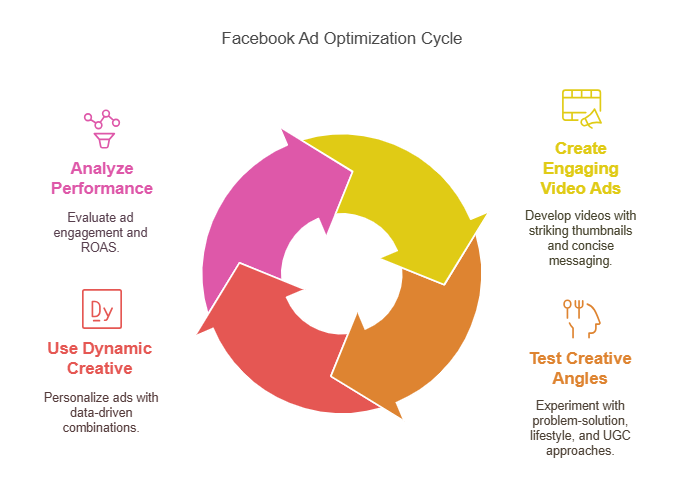
Strategy 4–6: Target the Right Audience
Leverage Lookalike Audiences Based on High-ROAS Buyers
Lookalike Audiences are a tool to help you find new people who resemble your best customers. Here’s how to set them up:
- Source Audience: Start by using data from your customers who have the highest Return on Ad Spend (ROAS). This data will form your base group.
- Audience Size: It's a good idea to start with a 1% similarity rate. This means you're targeting people who are very similar to your top customers, which helps keep your efforts precise and focused.
- Continuous Refinement: Always keep track of how your audiences are performing. Don’t hesitate to tweak and adjust to improve results.
By using this strategy, you can broaden your audience to include more potential customers. These new people are more likely to make a purchase, which can help increase your ROAS.
By using this strategy, you can broaden your audience to include more potential customers. These new people are more likely to make a purchase, which can help increase your ROAS.
Use Retargeting with Catalog Sales and Engagement Ads
Retargeting aims to reach people who have shown interest in your brand but haven't bought anything yet:
- Catalog Sales Ads: These ads display products that people viewed but decided not to purchase.
- Engagement Ads: These reconnect with users who previously interacted with your content.
Reminding these interested individuals about your offerings can help increase the likelihood they will complete a purchase, which can also improve your Return on Ad Spend (ROAS). Retargeting serves as a powerful tool to enhance both conversion rates and the effectiveness of your advertising efforts.
Exclude Low-Value or Non-Engaged Segments
Optimizing your ad spending means concentrating on groups of people who are most likely to buy your product:
- Avoid Sending Ads to Past Buyers: Once someone has bought your product, there's no need to target them with ads again.
- Check Their Interaction: Remove people who don't click or interact much with your ads. This way, you're not wasting money on uninterested users.
- Don't Target Unlikely Groups: Use past data to identify groups who haven't shown interest in buying and exclude them from your ad campaigns.
By focusing on these steps, you make sure to use your advertising budget wisely. This way, you only target those who are more inclined to make a purchase, increasing your Return on Ad Spend (ROAS).
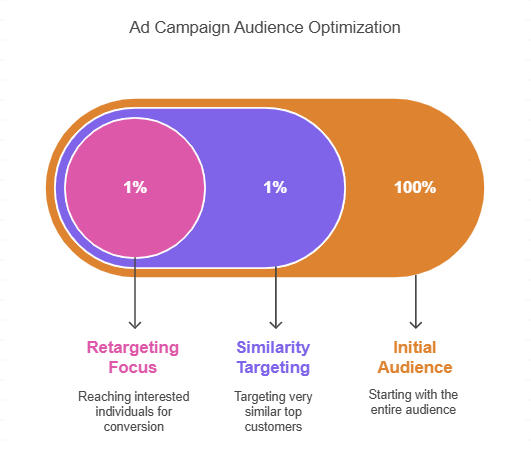
Strategy 7–8: Improve Landing Page Conversion Rates
Ensure Page Speed and Mobile Responsiveness
Let’s be blunt—if your landing page loads like it's stuck in dial-up days, you’re hemorrhaging conversions.
Page speed is a silent killer of ROAS. Even a one-second delay can reduce conversions by 7%. On Facebook, where most traffic comes from mobile, slow-loading pages are a death sentence for your return on ad spend.
Here's what to do:
- Utilize tools like Google PageSpeed Insights to evaluate how quickly your website loads.
- Optimize images so they load faster, ensuring they still maintain good quality.
- Get rid of any JavaScript that isn't necessary for your website to function.
- Choose simple and versatile themes that work well on different types of devices.
It's very important to focus on mobile users nowadays. This has become a basic standard in the industry. If your Facebook ads are created for mobile users, make sure your landing page gives a similar experience. It should be organized, quick to load, and easy to navigate with a thumb on a smartphone.
Align Message Between Ad and Landing Page
There's an idea called "ad scent." This is how it works: If your ad promises “50% off all protein powders” but when someone clicks, they land on a page saying “Welcome to FitShop,” it breaks the connection. People get confused because it doesn't match what they expected, and they might leave without buying.
To prevent this, make sure everything matches well. When your ad and landing page have the same style, pictures, offers, and messages, it builds trust with visitors. It helps them avoid any confusion.
Here’s a checklist to ensure everything aligns:
- Keep headlines and Call to Action (CTA) words the same in both the ad and landing page.
- Use the same product pictures in both places.
- Focus on highlighting the same problems and benefits in your ad and on your landing page.
By doing this, fewer people will leave your page without buying anything, and you will get a better return on the money spent on ads. This seamless experience makes users feel confident and more likely to purchase from you.
Strategy 9–10: Optimize Facebook Ad Budget and Bidding
Use Campaign Budget Optimization (CBO) Smartly
CBO acts as Facebook's built-in system for managing your advertising budget. It automatically allocates money to your ad sets based on their performance. However, for CBO to work well, you need to feed it high-quality information from the start.
To get the best results from CBO, consider these suggestions:
Make sure your ad sets target different groups of people, so they don't compete with each other.
Categorize your ad sets according to their goals, such as reaching new people (cold traffic) or engaging with existing customers (warm traffic).
Allow your campaigns to run uninterrupted for 3 to 5 days before you start tweaking them.
By strategically using CBO, you can simplify budget management and see a gradual improvement in your return on ad spend (ROAS) over time.
Analyze ROAS by Placement and Breakdowns
Many advertisers spend money on every ad placement, like Stories, Reels, Feeds, and Audience Network, without much thought. This approach is like trying to hit a target without knowing where it is.
To make better decisions, use Facebook's breakdown reports. These reports help you analyze:
- ROAS (Return on Ad Spend) by device, such as comparing desktop vs mobile performance.
- ROAS by placement, like seeing how Instagram Stories perform against the Facebook Feed.
- ROAS by demographic details, like age, gender, and location, so you know which groups give the best results.
Tools like Denote become really helpful here. Denote allows you to look beyond just your own data. You can explore what your competitors are doing, checking their placement choices and ad spending strategies through the Facebook Ad Library. By observing what works for others, you can confidently adopt similar strategies to improve your own ad performance.
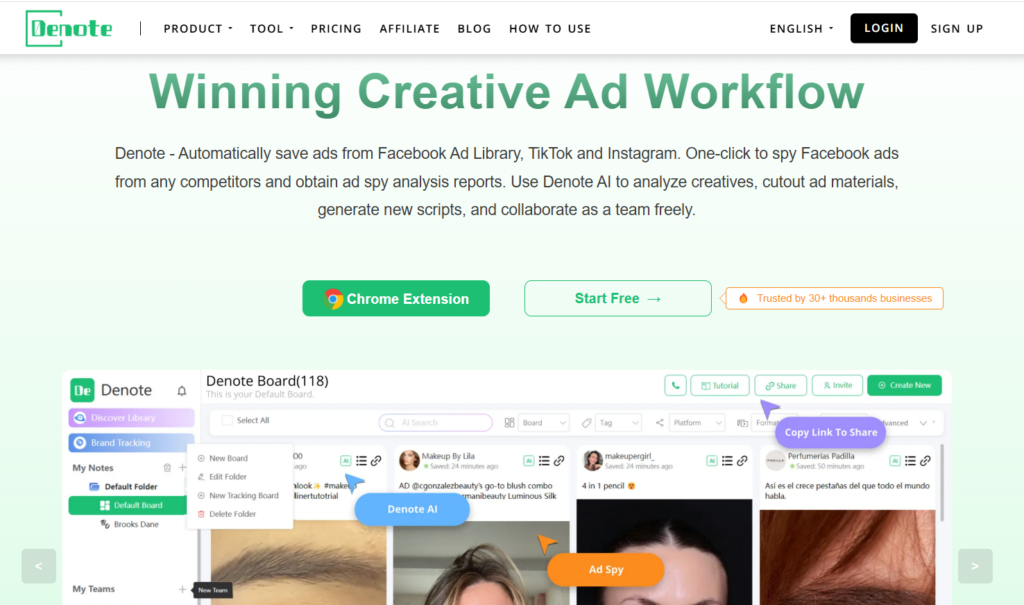
Bonus: Tools to Help You Increase Facebook ROAS
Facebook Ads Manager and A/B Testing Tools
Your main and most important tool is Facebook Ads Manager. Here, you can manage your budget, try out creative ideas, target the right audience, and track ad performance.
But there's more you can do to improve your results:
- Use Google Optimize or Convert to test different versions of your landing pages. This helps you see what works best.
- Use Hotjar to find out why visitors aren't taking the actions you want. It can give insights into user behavior.
- Try Meta Advantage+ campaigns to automate and improve the reach of your ads. This can help scale your efforts efficiently.
Testing is essential for business growth. By experimenting in a structured way, you don't just guess how to improve your Return on Ad Spend (ROAS). You continually make small improvements, step by step, to achieve better results.
Creative Spy and Benchmark Tools Like Denote
Let’s talk about a secret weapon: Denote.
Denote isn’t just another “creative library” tool. It’s a full-scale ad intelligence platform that lets you:
- See top-performing creatives across Facebook and Instagram.
- Analyze competitor ad spend trends by creative type, placement, and timing.
- Identify which ads are being pushed with the biggest budgets—so you know what works before you spend a dime.
Imagine walking into a poker game knowing your opponents’ cards. That’s what Denote does for your Facebook ad strategy.
Want to increase ROAS? Use Denote to uncover what’s driving high-ROAS ads across your niche, then reverse engineer their success.
Denote helps you spy ethically, optimize creatively, and spend intelligently.
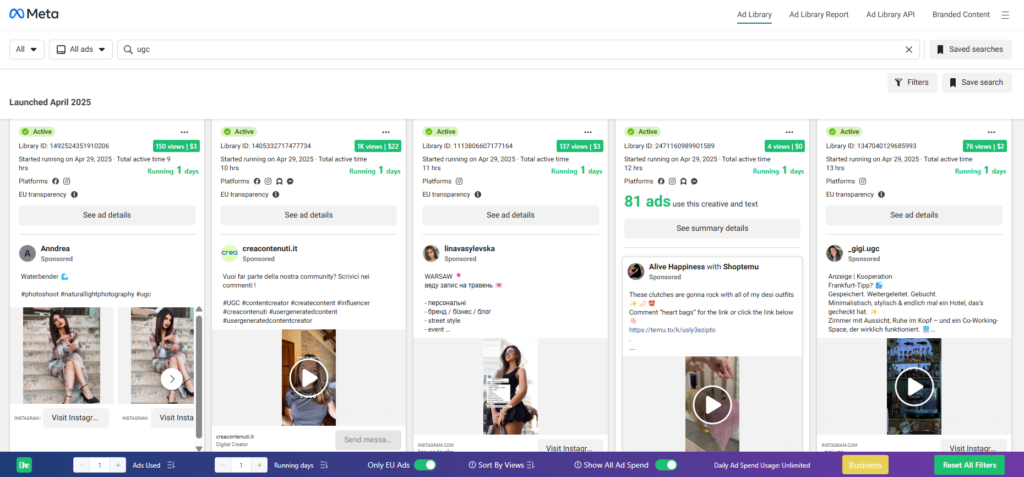
Conclusion
Let’s not sugarcoat it—Facebook Ads in 2025 is a battlefield. Rising CPMs, algorithm changes, privacy wars—it’s not easy out there.
But with the right tools, data, and mindset, you can increase ROAS steadily and sustainably.
Here's the recap:
- Start with solid creative—varied, tested, dynamic.
- Target with intention—lookalikes, retargeting, smart exclusions.
- Align ads with landing pages—speed, relevance, trust.
- Use data to guide budget decisions—CBO, breakdowns, benchmarks.
- And finally, let tools like Denote be your unfair advantage, revealing competitor ad spend and campaign strategy like a flashlight in the dark.
Whether your ROAS is 1.5 or 5.0 today, there’s always room to climb. Make increasing ROAS your obsession, not just your KPI—and watch everything else improve with it.
Let’s be honest—no one remembers the campaign that had 1,000 likes. They remember the one that made bank.
So go ahead. Test boldly. Optimize relentlessly. And may your return on ad spend rise higher than ever in 2025.
